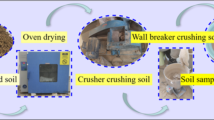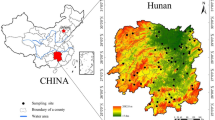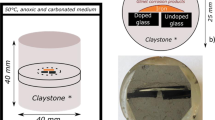Abstract
THIS communication describes the application in research on clay minerals of an electrical potential method, first used for research on glass-crystalline systems1. Clay minerals undergo a number of changes during heating, resulting in changes in the electrical potential at the contact surface between the clay and a suitable reference material. The changes are caused by one or more of the following: (a) loss of interlayer or crystalline water; (b) breakdown of the clay mineral lattice; (c) disappearance or formation of crystalline phases; (d) formation of glassy phases.
This is a preview of subscription content, access via your institution
Access options
Subscribe to this journal
Receive 51 print issues and online access
$199.00 per year
only $3.90 per issue
Buy this article
- Purchase on SpringerLink
- Instant access to full article PDF
Prices may be subject to local taxes which are calculated during checkout
Similar content being viewed by others
References
Borisov, A. F., and Zadumin, V. I., Steklo i Keramika, 21, No. 3 (1964).
Author information
Authors and Affiliations
Rights and permissions
About this article
Cite this article
TÄUBER, K., SCHMIDT, E. Electrical Potential Measurements on Clays. Nature 218, 105 (1968). https://doi.org/10.1038/218105a0
Received:
Issue date:
DOI: https://doi.org/10.1038/218105a0



